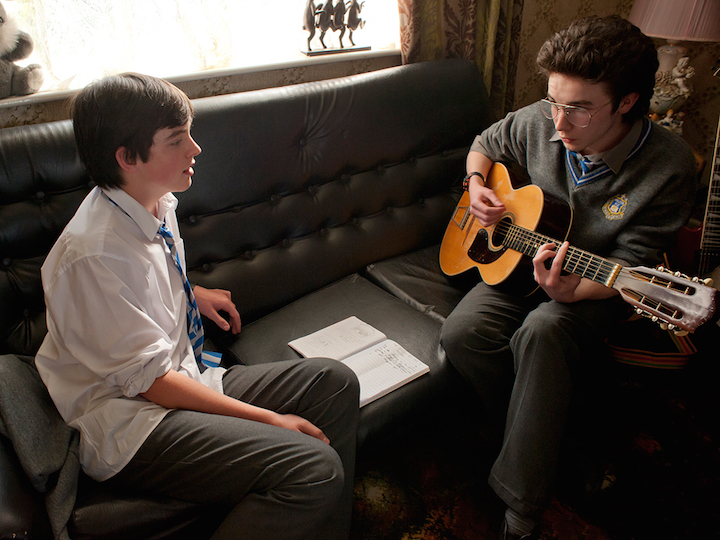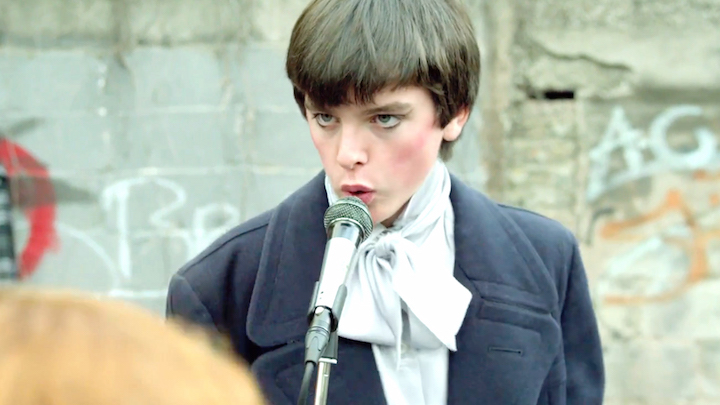It’s all about the music.
Music has been an integral part of cinema since the beginning. Before movies even had sound, live orchestras had to perform the original scores in the theater. And as the silent film era died and the talkies came in, movie musicals became the biggest thing on the scene.
Since then, movies have tackled music in many ways. Aside from classic musicals like The Sound of Music and Singin’ in the Rain, we’ve gotten films about musicians like August Rush and Whiplash. Of course, we’ve also seen our fair share of award-winning music documentaries, like Amy and Twenty Feet from Stardom.
Sing Street, in its own little way, celebrates the act of songwriting and the creative process in general. More than a few scenes in the movie are dedicated to quiet moments during which our hero, Conor (Ferdia Walsh-Peelo), and his multi-instrumentalist friend Eamon (Mark McKenna) try figuring out how to make different lyrics sound good with music. They’re far from the greatest musicians in the world, but there’s a genuine sense of awe between them when they find a good melody or a good chord progression.
From then on, we get to see Conor’s fledgling band (named Sing Street, of course) perform the songs in full. But as we listen to them play, we begin to realize that their songs are directly influenced by all the music they’ve listened to (for example, the band’s song “A Beautiful Sea,” in particular, sounds uncannily like The Cure). Furthermore, all the lyrics that Conor has written seem to be references to his previous experiences living in ’80s Ireland. And we as audience members understand exactly what every single lyric means, and we understand why every note sounds the way that it does. Immediately we see the personal bond between Conor and his music.
But more than anything else, this shows the transformative power of art. By writing lyrics about his negative experiences, Conor gains power over them. He turns them into statements of defiance and resilience. And by combining his lyrics with the music that he loves so much, he turns his negative experiences into positive tools — to make living in ’80s Ireland more bearable, to say “screw you” to his cruel headmaster, or simply just to make a girl smile.
Sing Street understands how personal art can be, and how beautiful it is when it’s shared among people. Perhaps the most beautiful thing the film accomplishes is that it shares the creative process with the audience. As we are shown every intimate step of Conor’s songwriting routine, we are right by his side, interpreting each lyric and comprehending each note. By the end, it actually feels like we’ve helped him write all these songs, and we’ve formed our own personal bonds with them.
One seeming weakness cinema has always had is that it isn’t participative; it’s not like theater where the actors on stage can bounce off the audience’s energy. It’s not like a live concert where the audience can sing along with the artist. It’s not like art in a museum, which can be observed (and at times be touched) by the viewer at their own pace.
But Sing Street brings audiences closer to cinema than any other film has done so far this year. And that’s what makes it worth your attention.
For the author’s full review of Sing Street, check out the video below:






